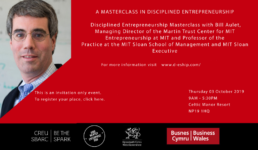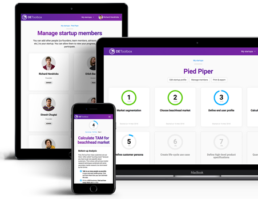Introduction to Disciplined Entrepreneurship Workshop
Dates
Oct 3, 2019
Location
Newport, Wales
How to attend
Invitation-only
More details
Be the Spark website
Bill Aulet
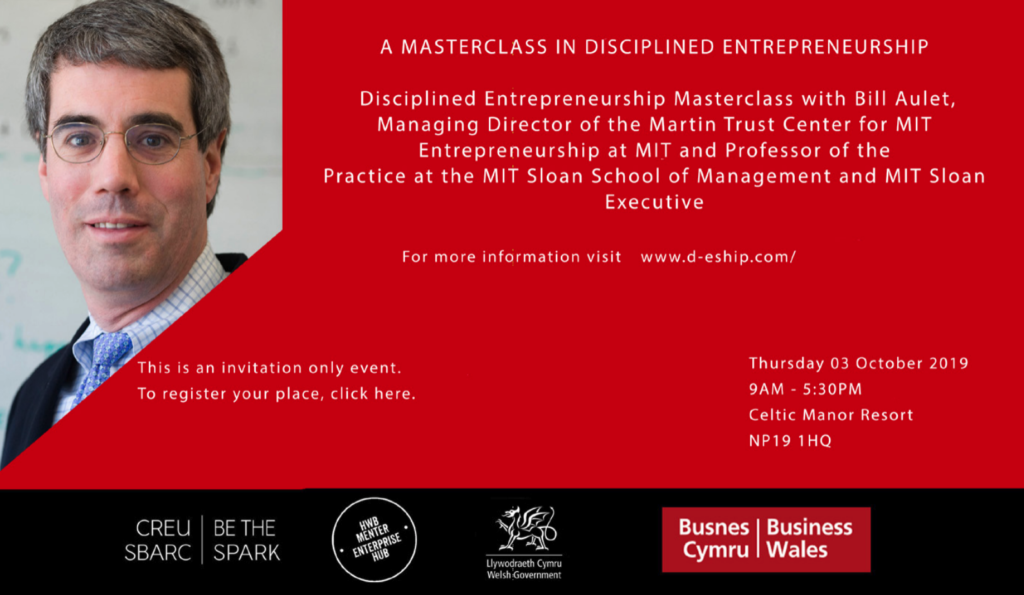
Are you an entrepreneur, a CEO/Senior Decision Maker at a start-up or early stage tech business or involved in Enterprise Education?
Then you and your network members won’t want to miss this unique opportunity to learn from globally recognised serial entrepreneur, award winning author and thought leader, Bill Aulet. Bill is changing the way entrepreneurship is understood and practiced around the world. He has over 25 years’ of business success, first at IBM and then as a three-time entrepreneur. He has directly created hundreds of millions of dollars in shareholder value in his companies and raised well over $100M in funding. Bill has degrees from both Harvard and Massachusetts Institute of Technology (MIT) and over the past seven years has been responsible for leading the development of entrepreneurship education across MIT.
Welsh Government has secured Bill Aulet to come to Wales to deliver an intensive one-day master class based on his proven framework and international best-selling book ’Disciplined Entrepreneurship: 24 Steps to a Successful Start-Up’. The master class will take place on 3 October between 9am and 5.30pm at the Denbigh Suite at the Celtic Manor Resort, Coldra Woods, Usk Valley, Newport NP18 1HQ. Refreshments and lunch will be provided.
This is an invite only event with a limited number of spaces. It’s our intention to invite delegates from across Wales and via a number of established networks and stakeholder groups. With this in mind, I have allocated 4 tickets to you for Wrexham Hub community members. Please identify entrepreneurs/delegates from your network and ask them to register via the links below. To ensure that we maintain an even spread of delegates from across the ecosystem please include your network name in the organisation field on the booking form e.g. Jaguar Enterprises (Wrexham Hub).
Tentative Agenda:
- 9:00 am: Welcome, introduction, an overview of the program and desired outcome (Georgina Campbell & Duncan Hamer)
- 9:30 am: Entrepreneurship in Wales Today and Ice Breaker
- 10:30 am: Break
- 10:45 am: Overview Disciplined Entrepreneurship (DE) & Why It Was Created (Bill Aulet)
- 11:00 am: DE Framework in Action (Bill Aulet)
- 11:30 am: Theme 1: Who Is Your Customer? (Bill Aulet)
- 12:30 pm: Break for lunch
- 1:00 pm: Primary Market Research (PMR) Tips and Techniques (Bill Aulet)
- 1:30 pm: Theme 2: What Can You Do for Your Customer? (Bill Aulet)
- 2:30 pm: Competitive Advantage (Bill Aulet)
- 3:30 pm: Break
- 3:45 pm: Theme 3: How Does Your Customer Acquire Your Product? (Bill Aulet)
- 4:15 pm: Theme 4: Unit Economics
- 5:00 pm: Resources Going Forward and AMA (Ask Me Anything) with Bill Aulet
- 5:25 pm: Wrap up and Close (5 minutes)
- 5:30 pm: Reception for Delegates with “Be The Spark” Team
Sponsor: “Be The Spark” organization and Welsh Government
Contact: Matt Collins
Sign up for our newsletter
The books
This methodology with 24 steps and 15 tactics was created at MIT to help you translate your technology or idea into innovative new products. The books were designed for first-time and repeat entrepreneurs so that they can build great ventures.
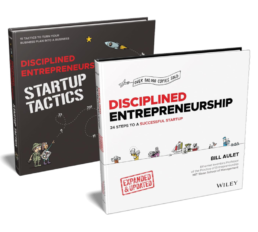
FOMO Hurts You in Entrepreneurship - Close Some Doors to Succeed!
As I run workshops for entrepreneurs, a key part of our training is that they have to focus. Entrepreneurs have to select a beachhead market and then actively deselect other markets. It is very common that students have resistance to this step from mild to actively and emotionally rejecting this concept as wrong. The selecting a market is not so hard but it is the deselecting that causes the problems. As we do in our example, an entrepreneur can’t claim to be disciplined when they are a Lamborghini dealership while they are also taking in the Volvo to service it, as we do in one of the first exercises of the workshop.
But in the eyes of resistors even after they are told they have to deselect, you can still see, they really DON’T want to deselect. They want to do it all. If this is you, don’t feel abnormal. It is perfectly normal for humans to NOT want to close doors. A renowned behavioral economist, Daniel Ariely, has shown how deeply ingrained in our psyche this is in his experiments. “Decision-makers overvalue their options and are willing to overinvest to keep these options from disappearing,” because they have a fear of missing out (FOMO).
You can read Daniel’s books, which I recommend the first one in the recommended books section of this web site under the tab “Resources” or you can just read a summary of this specific behavior in this article from the New York Times to get the essence of this point: https://tierneylab.blogs.nytimes.com/2008/02/25/dear-irrational-reader-close-the-door/
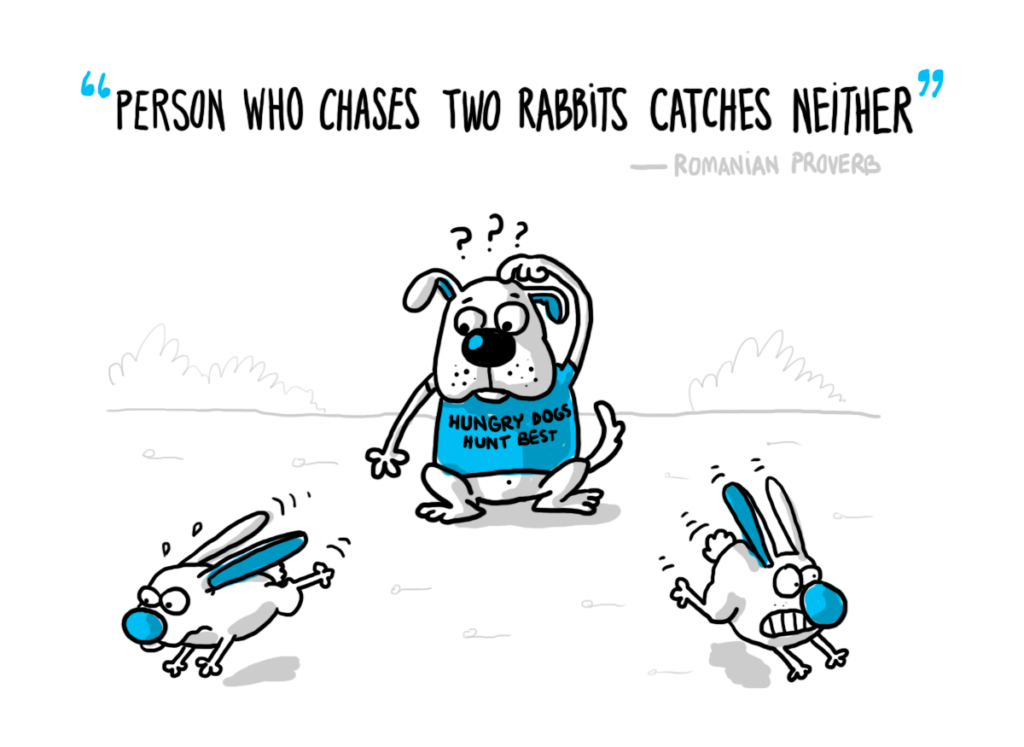 From my vantage point, the takeaway is twofold. First, focus is extremely important even if it does not feel right in your gut. It will significantly improve your odds of success. Closing off options so you can give full focus to the one you do choose will increase your odds and speed of success or failure. Both of these are good. You can more easily recover from failure if it happens quickly.
From my vantage point, the takeaway is twofold. First, focus is extremely important even if it does not feel right in your gut. It will significantly improve your odds of success. Closing off options so you can give full focus to the one you do choose will increase your odds and speed of success or failure. Both of these are good. You can more easily recover from failure if it happens quickly.
The second point is that entrepreneurship is not just intuitive despite what conventional wisdom might lead you to believe. This but one example where if you know the research, you know important first principles based in research that will give you a more systematic knowledge of the decision you are making and hence increase your odds of success. It is another proof point that entrepreneurship is a learned craft that practitioners who studied what they are doing will get better over time. If you are willing to take entrepreneurship seriously as a body of field of study and a body of knowledge, then the more you intelligently practice it, the better you will get.
The author
Bill Aulet
A longtime successful entrepreneur, Bill is the Managing Director of the Martin Trust Center for MIT Entrepreneurship and Professor of the Practice at the MIT Sloan School of Management. He is changing the way entrepreneurship is understood, taught, and practiced around the world.

The Disciplined Entrepreneurship Toolbox
Stay ahead by using the 24 steps together with your team, mentors, and investors.
The books
This methodology with 24 steps and 15 tactics was created at MIT to help you translate your technology or idea into innovative new products. The books were designed for first-time and repeat entrepreneurs so that they can build great ventures.

“It is More Fun to be a Viking than to Join Statoil”: Thoughts After an Intense 4 Day Workshop in Norway
Last month, from May 20-23, I had the honor of leading an intense four day workshop on Disciplined Entrepreneurship for about 80 participants who were either entrepreneurs, aspiring entrepreneurs or entrepreneurship amplifiers (i.e., educators, people running incubators/accelerators, government agencies supporting entrepreneurship). This is my third year doing it and I really enjoy it for many reasons.
This year, the program was hosted at the University of Stavanger and specifically Professor Jan Frick and Egil Svela in collaboration with the Southwest Norway REAP Team. The first year I did a similar mini-course in Alesund and last summer it was in Kristiansand. Each year the host city has essentially doubled in population size. Next summer, Bergen is the planned host, which will be yet another doubling in size. I feel like I am really getting to know Norway and Norwegians.
Each year brings new insights and this year was no different. Here are my top takeaways the Stavanger workshop and associated discussions:
- Viking Spirit Lives On: Despite an economy that is booming in large part from the oil industry off its shores, Norwegians still possess the historical Viking spirit. Some participants indicated that they preferred I use a Viking reference as opposed to our common “pirate” references. While clearly selection bias was in play with the people I was meeting, it was impressive how many of the participants wanted more than the comfortable life, which is so prevalent in Norway. They were seeking a challenge. For many of them the challenge was climate change but there were many other as well. Innovation-driven Enterprise (IDE) entrepreneurship was welcomed with open arms.
- Well Educated and Collaborative Talent Pool: The human talent pool for entrepreneurship is quite strong in two important dimensions. They are very well educated and they are very collaborative.
- Stable Government and Society: Another factor that helps support entrepreneurship that Norway takes for granted is a stable government and society. As we see in so many other places, disruption at either of these levels makes long term planning and investment more risky, and Norway is at an advantage here.
- Multi-Stakeholder Model to Support Entrepreneurship: Through the MIT REAP program, Norway has gotten the coordinated involvement of universities, government, risk capital, corporations and the entrepreneurial community to support the development of a more robust innovation-driven entrepreneurial ecosystem. This makes for a much more efficient execution of any program and integration across the portfolio of implemented programs.
- Bottoms Up Law Still Rules: Even with such models, it is incredibly important to not get de-focused. In Western societies, entrepreneurship is driven “bottoms up”. That means that the engine that will propel advancement is the entrepreneurs themselves. I have not yet seen a successful model to drive entrepreneurship from “tops down” as all the four other stakeholders can do is help facilitate.
- The Single Necessary and Sufficient Condition for an Entrepreneurial Ecosystem: For a business, the single necessary and sufficient condition for a business is a paying customer. I start all of my classes with this so that students never lose the focus on the ultimate goal. Likewise, to have an entrepreneurial ecosystem, the single necessary and sufficient condition is entrepreneurs. The more entrepreneurs the better but you can also improve and ecosystem by making them higher quality and connecting them together to increase their productivity. That should be the unambiguous goal of any program to build an entrepreneurial ecosystem. Often efforts lose this focus.
- Kudos to Norway In this Regard: Learning from others, most specifically their Scottish friends, the Norwegians have implemented a plan to allocate resources and focus on the entrepreneurs. The Summer Scale School brings aspiring entrepreneurs together and invests in their training in a “hands-on” manner. It also builds a common language that will foster community that gives each entrepreneur a force-multiplier support structure. They are also doing this with a sustained (as opposed to a one time) investment. In basketball there is a saying “good things take a long time and mostly bad things happen quickly.” Much like Scotland, I am highly confident that with the other assets mentioned above, Norway will see success in the long term. I really believe in this multi-year grass roots programs as the fundamental component of creating sustainable innovation-driven entrepreneurial ecosystem. Regions often become mesmerized by recent events, new unicorns or the entrepreneurial hot topic du jour and undervalue a disciplined systematic longer-term approach when it is clear the latter works much, much better.
Random final comment on Norway trip … thanks to good friend Bjørn-Tore Flåten who so graciously took me to the fitness room on the next to last day where they had a basketball court. I was able to find my way into a basketball game with some of the locals (picture courtesy of another good friend Peter Klemsdal) and enjoyed mixing it up with the locals. Little did they know that the person playing with them was three times their age. This however was not relevant on the basketball court. All that matters that court of pure meritocracy is whether you win or not. (Note: we won.)

The author
Bill Aulet
A longtime successful entrepreneur, Bill is the Managing Director of the Martin Trust Center for MIT Entrepreneurship and Professor of the Practice at the MIT Sloan School of Management. He is changing the way entrepreneurship is understood, taught, and practiced around the world.

The Disciplined Entrepreneurship Toolbox
Stay ahead by using the 24 steps together with your team, mentors, and investors.
The books
This methodology with 24 steps and 15 tactics was created at MIT to help you translate your technology or idea into innovative new products. The books were designed for first-time and repeat entrepreneurs so that they can build great ventures.

Primary Market Research Tips: 15 Points of Wisdom for Better Interviews from a Pro
 As the Disciplined Entrepreneurship 24 step methodology has become more refined and robust from all the utilization it has gotten of the past five years, it has become clear to me that more and more the gating factor to success is the quality of the information utilized in executing the framework. This is Primary Market Research (PMR). If we put garbage PMR in, we will get garbage results out.
As the Disciplined Entrepreneurship 24 step methodology has become more refined and robust from all the utilization it has gotten of the past five years, it has become clear to me that more and more the gating factor to success is the quality of the information utilized in executing the framework. This is Primary Market Research (PMR). If we put garbage PMR in, we will get garbage results out.
However, how do we get good customer and market data? That was an important element of the DE Workbook and I did some research to write the primer in that book. Still, I felt I did not do it justice. There is some good work done by Giff Constable and Frank Rimalovski with their books Talking to Humans and Testing with Humans, but even with these books, there is more needed.
As I have thought about this, given lectures and done a lot of coaching in this area, I have come back to journalists as being great purveyors of this skill. The good ones are able to be empathetic listeners, they are able to assess a situation and incredibly efficiently and effectively extract information from people. In fact, this is a fundamental of their job, which they have to perform every day.
This past week during a workshop in Norway, I had the great fortune to have a highly accomplished (6 years) journalist who was a participant. As I was talking about this subject, this fact became known and I had him speak to the class about how he gets so much information. He gave a brilliant 15-minute talk which led me to ask him if he could summarize the key actionable points in a short email.
Below are Trygve Meyer’s 15 key points. Trygve spent 6 years working at Bloomberg interviewing thousands of people up to the highest levels in Norway. I find them useful to think about but the key is to practice them so they become second nature.
Here they are with a sincere thanks to Trygve for sharing them:
- The start of any good interview is preparation. Do your homework and use the resources at your disposal to collect information. For instance, using LinkedIn, Facebook, Twitter, friends, colleagues, publications etc. This information will not only make the interview more productive, but it will also make the interviewer more comfortable from the start of the interview.
- Do spend a little time before the interview in their normal setting. Use your senses – eyes and ears. Pay attention to layout, view, objects such as art and books.
- Find a good location for doing the interview. Preferably away from their normal office space. It is best to avoid a space they “own,” but at the same time, it has to be a place where the setting that will bring the interviewed person to ease. So, familiarity is important – need to be on “their territory.” Avoid public spaces too because of distractions and noise.
- Write down your questions in advance. Have at least twice as many questions as you plan to ask. Some questions get covered during the interview without being asked, so to avoid cutting it short – have backup questions.
- Ask if it is OK that you use a recording device. Clarify that it will be “only used for reference” and will not be used in any other setting or way.
- Make sure you make a series of open-ended questions that can create further avenues for exploration. “What is your ideal solution/resolution? Why do you care about this problem? Do you have any ideas for how to solve the problem?” Then follow up by “You said xyz – what did you mean by that? Can you further elaborate?”
- Have a clear plan for the progression of questions. Start with easy and open questions that will make the interviewed person to further ease and open up. A typical question can be: tell me about your normal workday?
- Work on asking the questions. Think of varieties of the same question. How many different ways can you ask the same question? How old are you? When were you born?
- If questions are avoided – go back and revisit the topic through a rephrased version of the same question. By the third time, something is answered the depth level and context will start to be close to the “truth.”
- Ask the person being interviewed to re-enact or show you how certain things are done or how a particularly interesting point happened.
- Use “yes”, smiles and positive grunts to reinforce what is being said. A supportive and empathetic listener will get more information than one that is not supportive. Keep in mind that you will want to strike a balance between becoming a cheerleader and getting the job done of getting the information.
- Use body language to reinforce the “yes” and the grunts. Nodding of head etc. May want to “mimic” the person being interviewed if this falls natural to you. Not like every move because it should not be done in a way that makes it obvious and it looks like you are fully replicating their every move.
- Do not sit with your arms crossed. Do not lean back and seem disinterested. Sit at the front of the chair and listen keenly to what is being said.
- Don’t jump in with new question once the previous one is answered. Silence and pause often will prompt the interviewed person to fill the silence with more information. Likewise, keep recording after the “official” interview is over. There are often snippets of gold being offered right as one is rounding off. The interviewed person is then at the most relaxed and lets down their guards.
- Bring a “wing-man”. Keep in mind that it takes a lot of concentration to listen and guide a conversation in an interview setting. A second person can spend their time observing body language and be a second note taker. Always good to have someone to discuss answers and observations with after an interview.
In addition to these, Trygve shared that his mindset and often openly shared approach for any interview that. “I have no opinion on this matter.” Of course, over time, he will start to form an opinion but it is important that he start in a non-judgmental frame of mind so he is completely open to whatever the person being interviewed is saying. A good journalist (and PMR collector) does not steer the conversation to his hypotheses (bad journalist do). It is very important that is your overall tone and it is projected and acted upon for the whole interview. You are NOT selling, you are in inquiry mode and collecting data points to be analyzed.
Do you agree with the key points above? If so, which and what would you suggest? Are there other key tips that you want to share?
PMR is a skill that develops over time. Like entrepreneurship, it is learned in the apprenticeship model. You can only really learn by doing but still, it is nice to know the fundamental principles you should be executing when you “do”. So jump in and try the techniques mentioned about. You should always be doing PMR so it should not be long from now. The day a company stops doing PMR is the day that the company begins the slow but sure process of dying.
The author
Bill Aulet
A longtime successful entrepreneur, Bill is the Managing Director of the Martin Trust Center for MIT Entrepreneurship and Professor of the Practice at the MIT Sloan School of Management. He is changing the way entrepreneurship is understood, taught, and practiced around the world.

The Disciplined Entrepreneurship Toolbox
Stay ahead by using the 24 steps together with your team, mentors, and investors.
The books
This methodology with 24 steps and 15 tactics was created at MIT to help you translate your technology or idea into innovative new products. The books were designed for first-time and repeat entrepreneurs so that they can build great ventures.

MIT delta v Demo Day Silicon Valley
Dates
Sep 16, 2019
Location
San Francisco or Silicon Valley
(to be confirmed)
How to attend
Free. Registration required.
Contact Brian Turnbull, bturnbul@mit.edu
More details
Bill Aulet
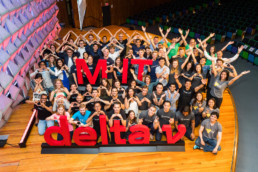
Very similar to the demo Day at MIT but this will be shorter and more targeted to an investor audience. Presentations will be shorter and there will be less energy because the audience will not be students but rather investment professions and other professionals in the Northern California area.
The purpose of this event is to give the students exposure to the investors, advisors and alumni in the Northern California area as well as to continue to build community in general for MIT entrepreneurs in this region.
Sign up for our newsletter
The books
This methodology with 24 steps and 15 tactics was created at MIT to help you translate your technology or idea into innovative new products. The books were designed for first-time and repeat entrepreneurs so that they can build great ventures.

MIT delta v Demo Day NYC
Dates
Sep 12, 2019
Location
New York City, NY
How to attend
Free. Registration required.
Contact Carly Chase, carlyc@mit.edu
More details
Bill Aulet

Very similar to the demo Day at MIT but this will be shorter and more targeted to an investor audience. Presentations will be shorter and there will be less energy because the audience will not be students but rather investment professions and other professionals in the New York City area.
The purpose of this event is to give the students exposure to the investors, advisors, and alumni in the New York City area as well as to continue to build community in general for MIT entrepreneurs in NYC.
Sign up for our newsletter
The books
This methodology with 24 steps and 15 tactics was created at MIT to help you translate your technology or idea into innovative new products. The books were designed for first-time and repeat entrepreneurs so that they can build great ventures.

MIT delta v Demo Day
Dates
Sep 6, 2019
Location
Kresge Auditorium, MIT Campus
Cambridge, MA
How to attend
More details
Bill Aulet

This is the best of the best students at MIT who have completed the full suite of entrepreneurship educational offerings. On this day, they make the final presentations. It is both educational and inspirational. Can be watched in person if you sign up and get there early enough, or online (much easier). Targeted to the MIT student body and investors in Boston.
The MIT delta v Demo Day is when the top MIT startups who have just completed the 90 full-time accelerator program (called “delta v”) make their presentation to the full MIT student body and local Boston entrepreneurial community.
It is an extremely high energy event and shows off not only the latest and greatest new ventures coming out of MIT but also how the structured entrepreneurial process at MIT produces results.
There will be 20 or more student teams presenting so that will be a wide range of topics but all using a similar process. Make sure to get there early as it fills up the largest auditorium at MIT every year. The day also features a keynote speaker(s) from a previous team who comes back to talk about what has happened since they completed delta-v.
Sign up for our newsletter
The books
This methodology with 24 steps and 15 tactics was created at MIT to help you translate your technology or idea into innovative new products. The books were designed for first-time and repeat entrepreneurs so that they can build great ventures.

Masters National Basketball Tournament
Dates
June 20–25, 2019
Location
Albuquerque, NM
How to attend
Simple. Buy a ticket.
More details
Bill Aulet

NSGA is excited to have Albuquerque host the 2019 National Senior Games in New Mexico. With support from the city and state, the Games in 2019 promise to provide the best facilities and amenities set against a unique backdrop of culture, history and natural beauty in the Land of Enchantment.
This is completely ridiculous to be listed but Bill will be completely consumed trying to win the over 60 national championship for basketball. Wish him luck!
Sign up for our newsletter
The books
This methodology with 24 steps and 15 tactics was created at MIT to help you translate your technology or idea into innovative new products. The books were designed for first-time and repeat entrepreneurs so that they can build great ventures.

Roman Gladiators: Entrepreneurs in the "Eternal City"
Read more
Scotland Summer Can Do Scale School & Alumni Day
Dates
June 3-5, 2019 (School)
June 6, 2019 (Alumni Day)
Location
@DoubleTree by Hilton Hotel, Dunblane Hydro, Dunblane, Scotland
How to attend
To attend, contact Graeme Schmidt, HIE Scale Project Manager.
More details
Bill Aulet
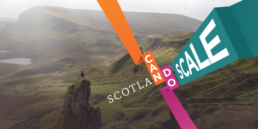
The Scotland Can Do SCALE program is an inclusive, high-growth entrepreneurial education initiative. Created by Scottish Enterprise, Highlands and Islands Enterprise and the Scottish Funding Council with support from Entrepreneurial Scotland and the Scottish Government, Scotland Can Do SCALE has been designed to make growth-orientated decisions more effective and easier to implement. Combining teachings from some of the world’s foremost experts on entrepreneurship and business growth with unrivaled peer-to-peer networking opportunities, SCALE’s four-day intensive residential program provides practical, structured next steps for attendees – taking theory into action.
Sign up for our newsletter
The books
This methodology with 24 steps and 15 tactics was created at MIT to help you translate your technology or idea into innovative new products. The books were designed for first-time and repeat entrepreneurs so that they can build great ventures.

